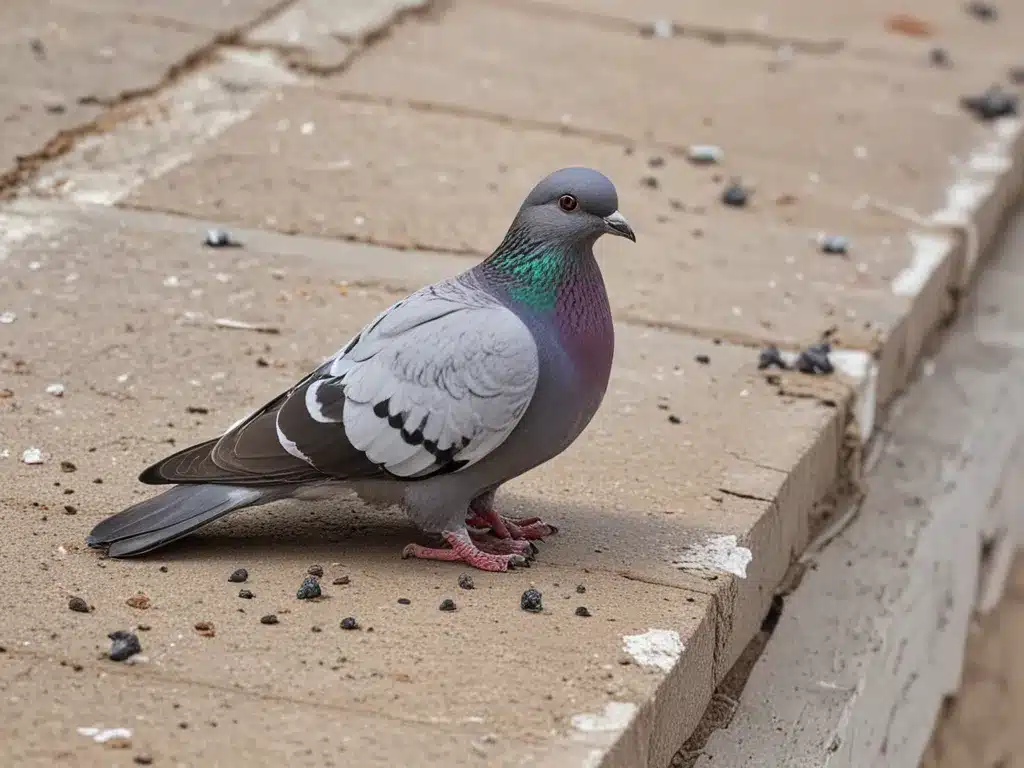Introduction
Pigeon droppings can pose health risks if allowed to accumulate. As someone who has dealt with this issue, I want to provide a comprehensive guide to understanding the risks and how to properly remove pigeon droppings.
Health Risks of Pigeon Droppings
Pigeon droppings contain bacteria, fungi, and parasites that can cause illness in humans. Here are some of the main health risks:
Histoplasmosis
- Histoplasmosis is a lung infection caused by breathing in spores of the Histoplasma capsulatum fungus found in pigeon droppings.
- It can cause flu-like symptoms, pneumonia, and even meningitis in rare cases. People with weak immune systems are especially vulnerable.
- Histoplasmosis spores thrive in large accumulations of droppings where the nitrogen content is high. Roosting sites have the highest risk.
Cryptococcosis
- Cryptococcosis is an infection caused by the Cryptococcus neoformans fungus also found in droppings.
- It most often affects the lungs and brain, causing pneumonia, meningitis, and other neurological issues.
- People with HIV have a higher risk of developing life-threatening cryptococcal meningitis.
Psittacosis
- Psittacosis, also called parrot fever, is a bacterial infection transmitted through inhaling dust from dried droppings.
- It causes flu-like symptoms as well as pneumonia, liver inflammation, and neurological issues in severe cases.
- Pigeons are a known carrier of Chlamydia psittaci, the bacteria that causes psittacosis.
Salmonella
- Pigeon droppings can harbor Salmonella and E. coli bacteria that can cause serious gastrointestinal illness.
- Symptoms include nausea, vomiting, diarrhea, fever, and abdominal cramps.
Parasites
- Pigeon droppings provide an environment where parasites like roundworms and tapeworms can thrive.
- These parasites can cause disease if accidentally ingested from contaminated surfaces.
Safely Removing Pigeon Droppings
Removing droppings requires care to avoid health risks. Here are some best practices:
Wear Protective Gear
- Wear gloves, coveralls, goggles, and an N95 respirator mask to avoid touching or inhaling droppings.
Use Water to Soften Droppings
- Use a garden hose or spray bottle to lightly mist droppings. This prevents dust and spore dispersal during removal.
Disinfect Surfaces
- Scrub surfaces using detergent and a stiff brush to lift all debris. Then disinfect with a 10% bleach solution.
Seal in Plastic Bags
- Place all waste immediately in plastic bags and seal tightly. Double bagging provides extra protection.
Clean Yourself Afterwards
- Remove gloves, coveralls and mask carefully to avoid contamination. Wash hands and exposed skin thoroughly with antibacterial soap.
Seek Medical Care if Symptoms Develop
- Monitor your health after exposure. Seek medical care if fever, cough or other symptoms occur to get prompt diagnosis and treatment.
When to Hire a Professional
It is highly recommended to hire a professional pest control company for:
- Large accumulations of droppings
- Areas where pigeons are actively roosting
- Removal from tall heights like roofs, trees or ledges
Professionals have training, equipment and products for safe removal and disinfection that reduces health risks. They can also implement preventive measures against future roosting.
Hiring a professional is especially important for those at higher risk of illness like the elderly, pregnant women, young children or immunocompromised individuals.
Preventative Measures
Here are some tips to help prevent pigeon droppings from accumulating:
- Install bird spikes, nets or slopes on ledges to deter roosting
- Use decoys of predators like hawks and owls
- Keep outdoor areas clean and dry – pigeons avoid areas with frequent human activity
- Seal off entry points on roofs, attics, and crawl spaces
- Remove food sources like open trash bins or pet food
Implementing preventative measures proactively is key to keeping pigeons and their droppings away in the first place. This protects human health and avoids costly removal projects.
Conclusion
Pigeon droppings can create unsanitary and unhealthy conditions if allowed to accumulate. By understanding the risks and following proper removal procedures, the health hazards can be avoided. Preventative measures can also be implemented to deter pigeons from roosting. If the problem is significant, hiring a professional is highly recommended to fully remediate the issue and protect human health. With proper action, pigeon droppings can be safely managed.







